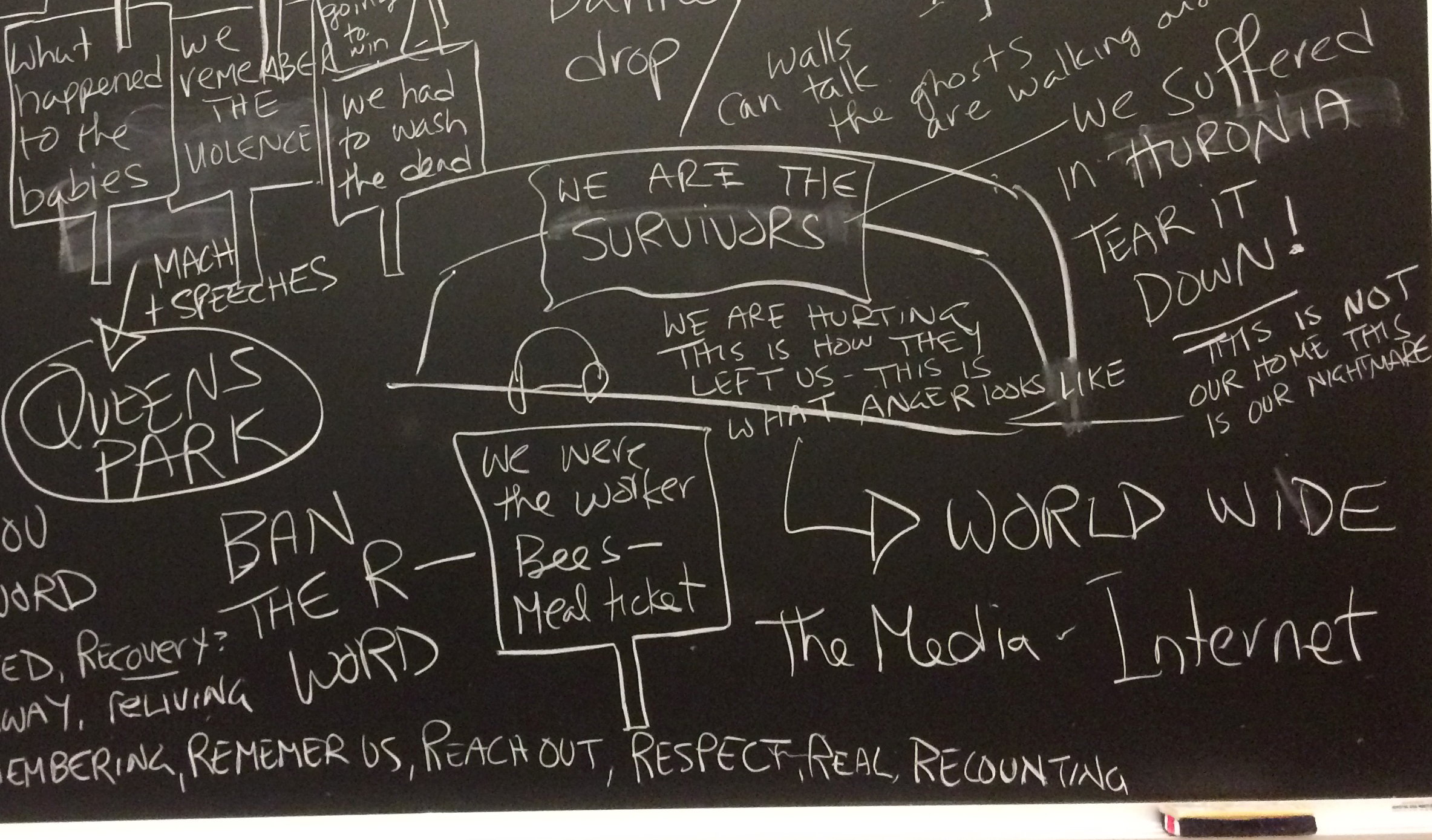That's My Story and I'm Sticking To It
DOI:
https://doi.org/10.15353/cjds.v6i3.364Keywords:
Oral history, institutionalization, scrapbooking, arts-informed methods, traumaAbstract
Cindy Scott is a proud lesbian woman and a survivor of the Huronia Regional Centre (HRC), an institution that housed persons diagnosed with intellectual disabilities 1876-2009. She is known for her work in Orillia, Ontario speaking about institutionalization and on behalf of residents who died and were buried in the cemetery on HRC grounds. For the past four years, Cindy has been a co-researcher working with Recounting Huronia: a collective of researchers, artists, and survivors using arts-based and storytelling methods to return to and preserve lived memories of the HRC. The research team often operated in pairs, in monthly workshops that used scrapbooking, poetry, cabaret performance, and other arts-based methods to articulate traumatic memories. The stories told here came from workshop exchanges between Cindy and fellow Recounting Huronia member Jen Rinaldi, and are anchored in scrapbook entries they developed together in Recounting Huronia workshops. Cindy retold these stories for Jen to transcribe, and Jen has provided some context via footnotes.
Downloads
Published
How to Cite
Issue
Section
License
There are no article processing or submission charges for CJDS authors.
Author(s) are not required to assign their copyright in and to their article to the Canadian Journal of Disability Studies. Instead, The CJDS asks for one-time rights to print this original work.
All articles in the journal are assigned a Creative Commons Attribution-NonCommercial-NoDerivatives 4.0 International (CC BY-NC-ND 4.0) license.

Authors are asked to contact the journal Editor if they wish to post the article on any website; translate or authorize a translation of the article; copy or otherwise reproduce the article, in any format, beyond what is permitted under Canadian copyright law, or authorize others to do so; copy or otherwise reproduce portions of the article, including tables and figures, beyond what is permitted under Canadian copyright law, or authorize others to do so.
Contacting the Editor will simply allow us to track the use and distribution of your article. We encourage use for non-commercial, educational purposes.
Authors must provide proof of permission clearance prior to the publication of their work if they are including images or other materials that are not their own. Keep in mind that such clearance can at times be costly, and often takes time. The journal editor can often work with you to seek permissions if you need information, advice or assistance.


